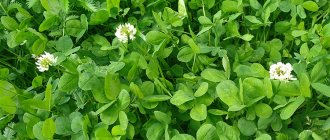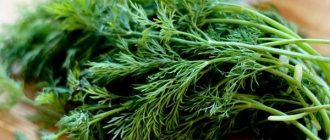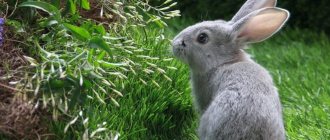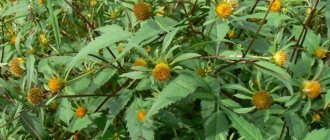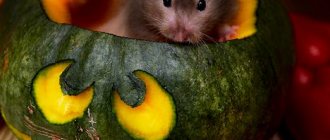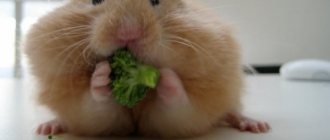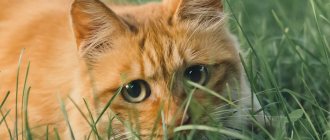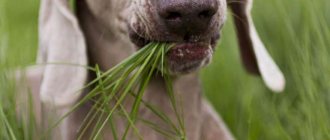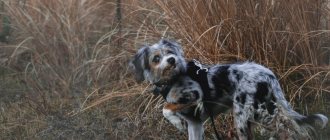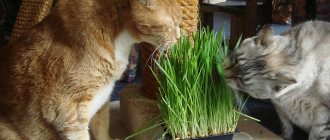Juicy feed contains a lot of water, which is necessary for all animals, as well as fiber, vitamins and microelements. Young grass is especially useful: leaves of cultivated and wild plants. But not all plant foods should be fed to your hamster, because there are herbs that are inedible for your pet. Therefore, we have collected information for you about what grass can be given to small hamsters. This will help you develop a diet for your furry friend without harming his health.
Why does a hamster need grass?
Inexperienced rodent owners wonder: do hamsters eat grass? Fluffies love fresh greens, especially lettuce. Grass is one of the food sources for hamsters. It is suitable as an everyday food for Djungarian hamsters, Syrians and representatives of rarer breeds.
Greens for a hamster are:
- source of energy (contains carbohydrates and proteins);
- vitamins, primarily ascorbic acid and carotenoids;
- a storehouse of mineral compounds: potassium, calcium, iron, copper, manganese and magnesium, phosphorus, selenium, zinc;
- a source of fiber necessary for proper digestion;
- in some cases - a medicine;
- building material for the nest.
For small rodents living in nature, leaves and herbaceous plants act as shelter. There wild animals hide from their enemies. And they use dry and fresh leaves to build nests for babies.
As you can see, having fresh greens in your pet’s cage is very important. But not all grass can be given to Djungarian hamsters and Syrians.
Pregnant females
When preparing for breeding, you should know that a pregnant female needs:
- boiled chicken meat;
- boiled yolk;
- skim cheese;
- greens, sprouted grains;
- increased amount of protein food: gammarus, earthworms, grasshoppers, butterflies (necessarily purchased in specialized pet stores).
During the gestation period, the volume of feed is increased so as not to cause concern to the mother due to lack of supplies. A piece of coal, a mineral stone, and calcium gluconate are placed in the cell.
Pregnancy lasts about 20 days. 5-15 babies are born. Fertilization of a female should not be allowed before four months.
It is important to provide the mother with peace: there should be no other hamsters in the cage, it is forbidden to pick up small cubs, because a foreign smell can frighten the mother. It is necessary to provide the female with a balanced diet and ensure peace. All this will prevent manifestations of cannibalism on the part of the mother.
What kind of grass can hamsters eat?
In order not to harm your pet, you need to understand a little about botany. After all, there are greens that are tasteless and even poisonous to domestic rodents. Here's what grass hamsters can eat:
- Greens from the garden: parsley and dill, carrot tops, celery, lettuce, bluegrass for the lawn.
- Weeds: dandelion (leaves without veins), wheatgrass, young nettle.
- Forage crops: clover, alfalfa, sprouted oats or wheat.
- Medicinal plants: plantain, rosehip petals.
- Leaves of trees and fruit and berry crops: apple, birch, willow, maple, cherry and many others.
All of the herbaceous plants listed have a different taste, and their vitamin and mineral composition is also different. Some plants can only be given to your hamster when he is sick, but most of them are suitable for a daily diet. Let's look at the beneficial properties of each group in more detail.
Garden greens
Djungarian hamsters really like grass from the garden. And their Syrian brothers will not refuse such a treat. After all, greens from the dacha are very tasty and healthy, especially if the owners grew them without using pesticides. Some rodent owners do not know what grass hamsters eat and how it is useful.
- Parsley and dill. The richest source of carotenoids, ascorbic acid and vitamin K. If you regularly give them to dzhungarikas, the risk of cataracts in animals will decrease many times; The immune system will become stronger and resistance to infections will increase. Parsley and dill contain many minerals necessary for the health of hamster teeth: calcium, phosphorus, magnesium.
- Celery. In addition to carotenoids and ascorbic acid, it contains B-group vitamins. Also rich in sodium, phosphorus, magnesium. Many people don’t know whether a hamster can eat celery, because it is a spicy plant with a specific taste. This is not prohibited, but feeding an animal with this plant is often prohibited. Once a week is fine.
- Carrot tops can be given to Djungarian hamsters to prevent heart attacks, colds and diabetes. The tops are not as sweet as the carrots themselves, but they contain 5 times more ascorbic acid! The “tops” contain a lot of calcium, which strengthens bones.
- Salad. Lettuce is a favorite herbaceous treat for domestic rodents. Their vitamin and mineral composition is the same as that of parsley, but there are fewer nutrients. You can feed Djungarian hamsters and Syrians with Beijing salad, but little by little.
Let's look at lawn grass separately. It usually consists of a mixture of herbs from the bluegrass family. The leaves and stems contain calcium and fiber, as well as some vitamins. Not everyone knows whether it is possible to give hamsters grass growing on the lawn. The answer is yes, but the grass must be young and grow away from highways.
Weeds
Djungarian hamsters readily eat some weeds.
- Dandelion leaves can be given to furry cats to prevent eye diseases. Due to the high content of vitamin E, with regular consumption of dandelion leaves, the pet’s coat becomes shiny, skin sores heal faster, and appetite improves. Dandelion is quite bitter, so its leaves are placed in a cage in small quantities, removing the central vein.
- Nettle is much less useful, but it contains iodine, which is low in other plants. Young leaves and shoots are suitable for eating.
- Wheatgrass has antitumor and immunomodulatory properties. It is fed to rodents fresh or as an additive to water during colds.
In rare cases, other plants are included in the diet. If you are unsure whether you can give your hamster wormwood, consult your veterinarian.
Feed
Plants growing in meadows are very succulent and nutritious. But can hamsters eat grass that is suitable for rabbits? There are several species that fit perfectly into the diet of a small animal.
Alfalfa and clover, like all legumes, contain a lot of protein. They are nutritious and healthy. The same can be said about wheat and oats, but these should not be already ripening crops: the animal should be fed with young, tender seedlings. The content of B vitamins, selenium and phosphorus in young plants is simply off the charts!
Medicinal plants
Plantain is a wonderful food for rodents. They eat only its leaves, which contain substances that have an antimicrobial effect. If homa eats plantain leaves, small wounds in the mouth (caused by hard food) will heal very quickly.
Djungarian hamsters enjoy eating petals of different colors. It is especially useful to give him rosehip or rose petals. They have a wound-healing effect and strengthen the immunity of furry animals.
Sick and weakened rodents
Often, after suffering stress, the animal gets sick. The disease can be caused by a new place of residence, moving, the appearance of a roommate in a cage, or a loud TV. If there is aggression, hair loss, parasites, skin inflammation, lethargy, or refusal to eat, you should visit a veterinarian.
Often such animals have to be force-fed, using grains crushed to a puree, ground, mixed with hot water or vegetables into a syringe. Food is served warm. Mashed potatoes and cereals are suitable for children. It is convenient to mix vitamins and medicines there. Sick Syrian hamsters are given chamomile infusion. They do this slowly, making sure that the hamster does not choke.
Prohibited plants
In addition to healthy greens, there are herbs that fluffies should not eat. Everyone knows that sorrel is very tasty and rich in vitamins, but small rodents should absolutely not eat it. It is too acidic and can corrode the mucous membrane of the digestive tract or cause allergies.
Prohibited herbaceous plants also include:
- potato tops (and sprouts). Not recommended due to the high content of the alkaloid solanine, which is poisonous to hamsters;
- white cabbage. Weakens the hamster's delicate stomach, causing diarrhea;
- garlic and onion feathers contain strong-smelling essential oils that provoke allergies. The hamster himself will not eat them because of the sharp bitter taste;
- mint and lemon balm are also strong allergens.
It is strictly forbidden for domestic rodents to collect grass from the street, because it is covered with a layer of dust, soot and heavy metals, poisonous to furry babies.
What's the result?
Yes, friends, to paraphrase a famous advertising slogan - not every weed is equally beneficial. While I was collecting material for the article, I was also surprised by some facts. It used to be like this: he went out into the yard, picked some grass and put it in a cage. What my dzhungarik liked, he ate, what he didn’t like, he didn’t eat. Accordingly, in the evening I threw it away so that it would not dry out and rot. Naturally, I didn’t give him any nettles, because I wouldn’t voluntarily climb into these thickets with my bare hands. It turns out in vain... Lack of iodine in the body causes problems with the thyroid gland, not only in hamsters, but also in people. Yes, I know about nettle cabbage soup, but sorry, it’s not my thing. Do whatever you want with me. And now I’m thinking... Maybe it’s for nothing that I don’t eat them?
Nothing beautiful is alien to us.
In the wild, how do hamsters distinguish beneficial grass from harmful grass? Trial and error? After all, the hamster itself is the size of a child’s fist. Does he need much? It seems that they are mistaken only once... Or, option No. 2 - during evolution, only those who can calmly digest 90% of everything that is in their habitat have survived.
What do you think of it? Tell me?
How to stock up on greens?
It is best to cut grass for fluffy at your own dacha or in natural conditions (meadow, field). It is necessary to ensure that the gathering place is away from large populated areas, busy highways and businesses.
In summer, problems with greenery usually do not arise; there is a lot of it everywhere. In winter, it is difficult to find healthy herbs: they are expensive in stores, and it is not known what pesticides and nitrates they contain. Therefore, plants can be frozen or dried in the shade and stored in jars. Frozen weed retains more nutrients when thawed in the refrigerator.
By the way, in winter you can grow fresh grass right on your windowsill! To do this, you will need a long box, soil or sawdust, and lawn seeds.
Prohibited Products
Some harmless products can be dangerous for both Syrian and Djungarian hamsters. List of what you should not feed them:
- food intended for parrots or other rodents;
- acorns, chestnuts, potatoes;
- cheese, lard, any products containing more than 3% fat;
- spices;
- almond;
- dairy products;
- sweets, juices;
- fatty food;
- white cabbage is dangerous and fatal;
- garlic, onion;
- chocolate;
- citrus, exotic fruits;
- seeds, seeds of any fruit;
- captured insects that are not typical for the diet of dwarf birds;
- canned, stewed, fried, smoked foods;
- butter.
The Syrian hamster has a lot of positive emotions, joy, laughter, and is not picky about food. But you need to feed him correctly, understanding that his well-being and life expectancy are influenced by proper maintenance, a balanced diet, and tender and kind feelings towards the pet.
Choosing dry food
The diet of jungarians consists of 80-90% dry food. The hamster should receive it every day, this is the basis of the diet. Djungarian hamsters eat little (about a tablespoon of food per day), which means you shouldn’t skimp on store-bought formulas. Let's consider several brands of proven products:
Food for dwarfs
Versele-Laga "Prestige Mini Hamster Nature"
The completely balanced composition, in addition to grains and seeds, contains dried vegetables, fruits and nuts, a protein component and yeast as a source of vitamins. If your pet is prone to obesity, you need to manually select pineapple and raisins.
Chika-Bio "Food for Djungarian hamsters"
Domestic food, not inferior in quality to imported analogues, but more affordable. The size of the food particles and the ratio of ingredients are selected specifically for feeding jungarians.
Food for hamsters of any type of excellent quality
JR Farm Hamster
It has high palatability: dungarians feed by eating the entire food, rather than choosing individual tasty components. The “chips” of the food are a variety of protein sources (mealworms, chicken, tiny fish), the prebiotic inulin, which improves digestion, and yucca extract, which reduces rodent odor.
Vitakraft Menu Vital
Usually used for Syrians. The downside is that honey is added to the mixture to improve the taste. The diet of Djungarian hamsters involves limiting sugars.
Fiory Criceti
For dzhungariks, this food does not contain enough protein, and you will have to manually select appetizing, but harmful honey granules.
Cunipic
This food is characterized by a relatively poor composition.
Vitapol and Lolo pets
It is better to store hamster food not in a bag, but pour it into a glass jar with a tight lid. The mixtures are complete: you can give your Djungarian hamster only dry food for a long time. The reason to diversify the diet is the special physiological status of the animal: growth period, pregnancy and lactation, mating time for the male.
On our website you can learn about the correct feeding regime for a hamster. These are important rules that can protect your pet from obesity and poisoning.
Preparation of raw materials.
Dandelions are edible not only for hamsters, but also for humans. Young leaves are used in salad, the rhizome is even sold as a medicine. It is a valuable source of vitamins, minerals and fiber. Vitamin C, beta-carotene and folate are especially beneficial for rodents. The plant has a mild laxative and appetite stimulating effect. However, not all hamsters eat dandelions.
Most likely, the pet refuses green treats because of the characteristic bitterness. To remove the unpleasant aftertaste, the leaves are scalded with boiling water. This is a quick method, but high temperature destroys some of the beneficial substances. It is better to soak dandelions in cold water for several hours.
Even if your pet happily eats dandelion in its original form, you should not give the leaves to your hamster without washing them thoroughly with running water. Otherwise, the hamster may become infected with worms or parasites. Even an ixodid tick can hide in fresh grass!
Before feeding the animal grass, it must be dried. And if the pet is not used to succulent food, or has never eaten greens before, then it is better to even slightly wither the leaves.
Food requirements
Preparing a diet for a hamster is not necessary if you use special food.
Standard kits contain a complete set:
- vitamins;
- essential nutrients;
- microelements.
The use of such compositions allows you to improve the animal’s diet and balance it. In addition to food, water must also be provided. It cannot be replaced even by the most succulent plant foods. If a hamster receives too little water during the day, it may even die or become disabled. For food, in addition to specialized food, the Djungarian species will eat:
- fruits;
- various vegetables;
- shoots of green plants;
- animal protein.
What to feed your Syrian hamster
Hamsters can only be given clean water to drink. It is advisable to give bottled liquid, but boiled or spring water is also suitable. Tap water contains metal and chlorine impurities. This may cause intoxication. You should not give your pets mineral water, sweet carbonated drinks, tea, etc.
In order for the Syrian hamster's digestive system to cope with food processing, it is necessary to fully replenish the water balance.
In case of seasonal vitamin deficiency, water is occasionally replaced with a special fortified drink for rodents. It can be purchased at a pet store. It is allowed to prepare herbal decoctions at home after permission from a veterinarian. But they are also offered no more than once every 1-2 weeks.
A special drinking bowl must be placed in the cage. It provides a portioned supply of fresh water. Standard bowls are not suitable for this purpose. Dirt will get into them. Hamsters often overturn their bowls, causing the contents to spill all over the cage.
You need to monitor the volume of water in the drinking bowl: on average, a healthy animal consumes 2.5-7 ml per day. The norm depends on environmental conditions, the pet’s body weight and the presence of succulent foods in its diet. If a hamster drinks little or completely refuses fluids, this is an alarming sign. The rodent can live without water for no more than 2 days. After 24-36 hours, irreversible changes begin to occur in the body, so it is important to contact a veterinarian in a timely manner.
Preparation for future use.
Picking herbs is the easiest way to provide your pet with healthy, succulent food. However, dandelion leaves lose their value closer to autumn, become dense, hard, and more bitter. What should you give your pet during the long autumn-winter period? You can buy sprouted oats or try to grow your own grass on the windowsill. Or you can prepare tender young grass for future use. In spring, greens are packaged into small portions and sent to the freezer. Freezing preserves much more beneficial properties of the plant than drying. This way the animal will be provided with high-quality feeding all year round without extra costs.
Feeding of young jungarians
For the first 2 weeks after birth, newborns are cared for by a hamster. After the babies “see the light”, you can start feeding them with peeled seeds. 3-week-old rodents can be given fresh herbs and cucumber to try, but fruits are best introduced into the diet of hamsters older than 1 month.
Unfortunately, sometimes a hamster dies during childbirth, then feeding the young falls on the shoulders of the owner. In this case, you will have to purchase a special milk replacer from a veterinary pharmacy and feed the tiny animals through a pipette. 10 days after birth, introduce complementary foods in the form of egg whites and low-fat cottage cheese, then herbs, seeds and vegetables.
As you can see, little fluffies should not eat everything; everyday human food and plants containing strong-smelling essential oils are especially harmful to them. But the range of permitted products is quite large, so feeding the dwarf is not a problem. Remember the main thing: food should be varied, fresh and unsweetened. This rule will help your pet live a healthy and long life.
Traditional plastic carrier
Perhaps the most common way to move small animals. Very well suited for long-distance travel, but in a car (and especially on a bicycle) a bulky plastic box is not very convenient.
Among the advantages, we note excellent breathability, ease of cleaning and maintenance, the ability to organize meals while traveling, hygiene, strength and durability.
The disadvantages are determined by the need to allocate space for storing this box and, of course, the outdated design. It is necessary to have such a device in stock, but it is not very suitable for short-term forays outside the city.
Cost – 1,146 – 2,137 rubles.
